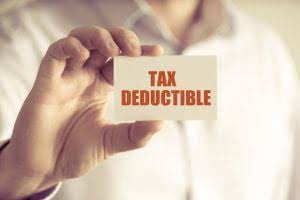13 Jan How Depreciation Benefits Your Business

Depreciation is thus the decrease in the value of assets and the method used to reallocate, or “write down” the cost of a tangible asset (such as equipment) over its useful life span. Businesses depreciate long-term assets for both accounting and tax purposes. Generally, the cost is allocated as depreciation expense among the periods in which the asset is expected to be used. A business depreciates assets to gauge its performance during a defined period of time, an accounting period, and to accurately report earnings or losses to the Internal Revenue Service, IRS. A business chooses a depreciation method to use in the preparation of its own financial statements, but the IRS dictates the retained earnings method of depreciation an accountant must use when filing a business’s federal taxes.

What is Depreciation, and why Should you Care About it?
- To calculate depreciation expense, multiply the result by the same total historical cost.
- For example, the contra asset account Allowance for Doubtful Accounts is related to Accounts Receivable.
- And… you need to recognise the value of your fixed assets and their depreciation over the years.
- The depreciation of assets is a common business practice used to recover the costs of those assets over time.
- In DDB depreciation the asset’s estimated salvage value is initially ignored in the calculations.
- By taking prompt and appropriate action, businesses can be sure they remain compliant with all relevant rules and regulations while avoiding costly fines or other repercussions.
The depreciable base is the amount used to calculate annuity depreciation. However, the uniqueness of this method is that asset value is depreciated at twice the rate it is done in the straight-line method. Let us discuss in detail the key reasons why businesses choose to depreciate assets. Many companies will replace their old equipment and machinery with new and more efficient assets. The fair value of an asset depends on its usability and demand in the market.
Professional Services
- Finally, the company paid $5,000 to get the equipment in working condition.
- At the end of three years the truck’s book value will be $40,000 ($70,000 minus $30,000).
- This depreciation can be helpful in financial planning because it can simplify the decision of when to retire an asset and provide a consistent calculation for tax purposes.
- An expense reported on the income statement that did not require the use of cash during the period shown in the heading of the income statement.
- The articles and research support materials available on this site are educational and are not intended to be investment or tax advice.
- The SYD method uses a fraction, with the numerator as the remaining years of the asset’s life and the denominator as the sum of the years’ digits.
- A business depreciates assets to gauge its performance during a defined period of time, an accounting period, and to accurately report earnings or losses to the Internal Revenue Service, IRS.
Canada’s Capital Cost Allowance are fixed percentages of assets within a class or type of asset. The fixed percentage is multiplied by the tax basis of assets in service to determine the capital allowance deduction. Capital allowance calculations may be based on the total set of assets, on sets or pools by year (vintage pools) or pools by classes of assets… Sum-of-years-digits is a spent depreciation method that results in a more accelerated write-off than the straight-line method, and typically also more accelerated than the declining balance method.

Sum of the Digits Method

When the straight-line method is used each full year’s depreciation expense will be the same amount. To illustrate an Accumulated Depreciation account, assume that a retailer purchased a delivery truck depreciable assets for $70,000 and it was recorded with a debit of $70,000 in the asset account Truck. Each year when the truck is depreciated by $10,000, the accounting entry will credit Accumulated Depreciation – Truck (instead of crediting the asset account Truck).
- Depreciating assets can give you more income on your profit and loss statement and increase your assets on your balance sheet.
- Under the tenets of constraint analysis, all of the assets of a company should be treated as a single system that generates a profit; thus, there is no way to link a specific fixed asset to specific revenue.
- Depreciation is only an accounting entry that does not involve an actual cash flow movement.
- It is a method of depreciation that calculates the value of an asset based on its usage.
- The expenditure incurred on the purchase of a fixed asset is known as a capital expense.

Other examples include (1) the allowance for doubtful accounts, (2) discount on bonds payable, (3) sales returns and allowances, and (4) sales discounts. For example net sales is gross sales minus the sales returns, the sales allowances, and the sales discounts. The net realizable value of the accounts receivable is the accounts receivable minus the allowance for doubtful accounts. Depreciation recapture is a provision of the tax law that requires businesses or individuals that make a profit in selling an asset—that was previously depreciated—to report it as income. In effect, the amount of money they Accounting For Architects claimed in depreciation is subtracted from the cost basis they use to determine their gain in the transaction. Recapture can be common in real estate transactions where a property that has been depreciated for tax purposes, such as an apartment building, has gained value over time.


No Comments